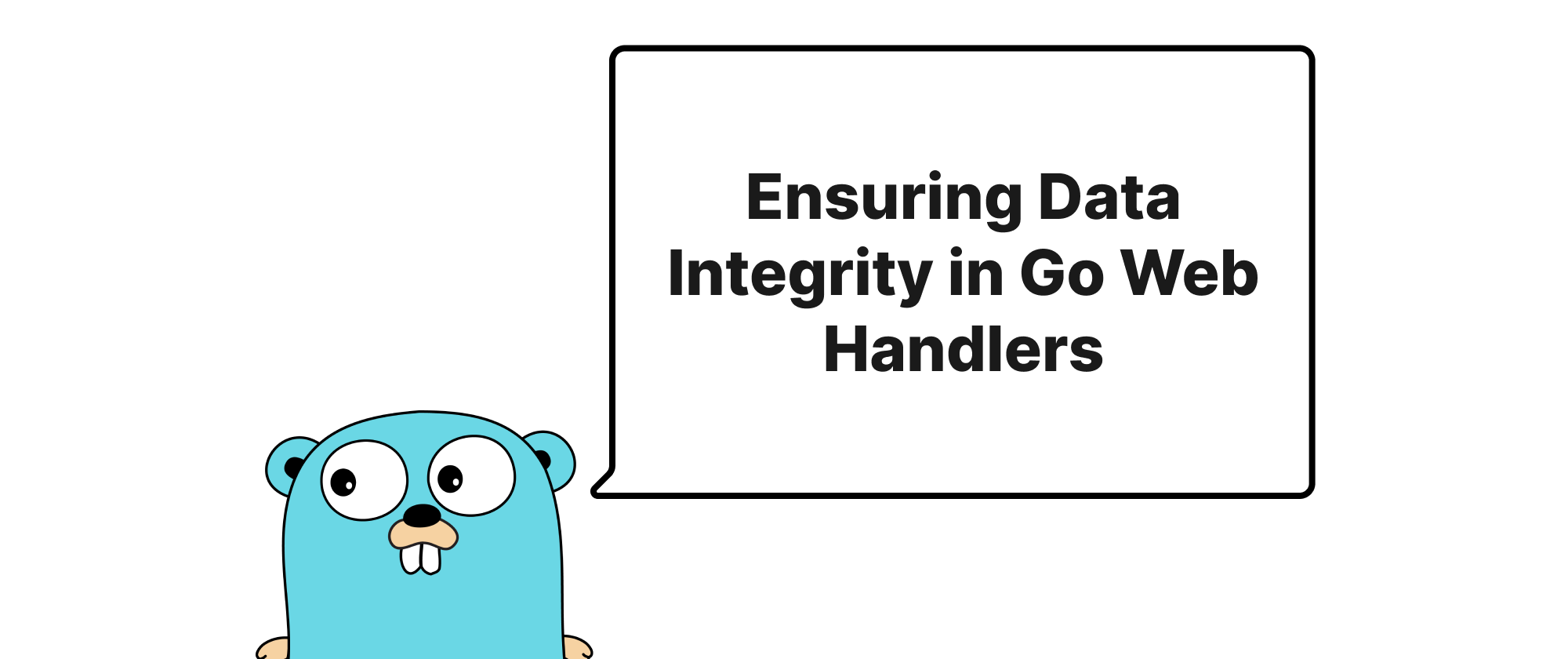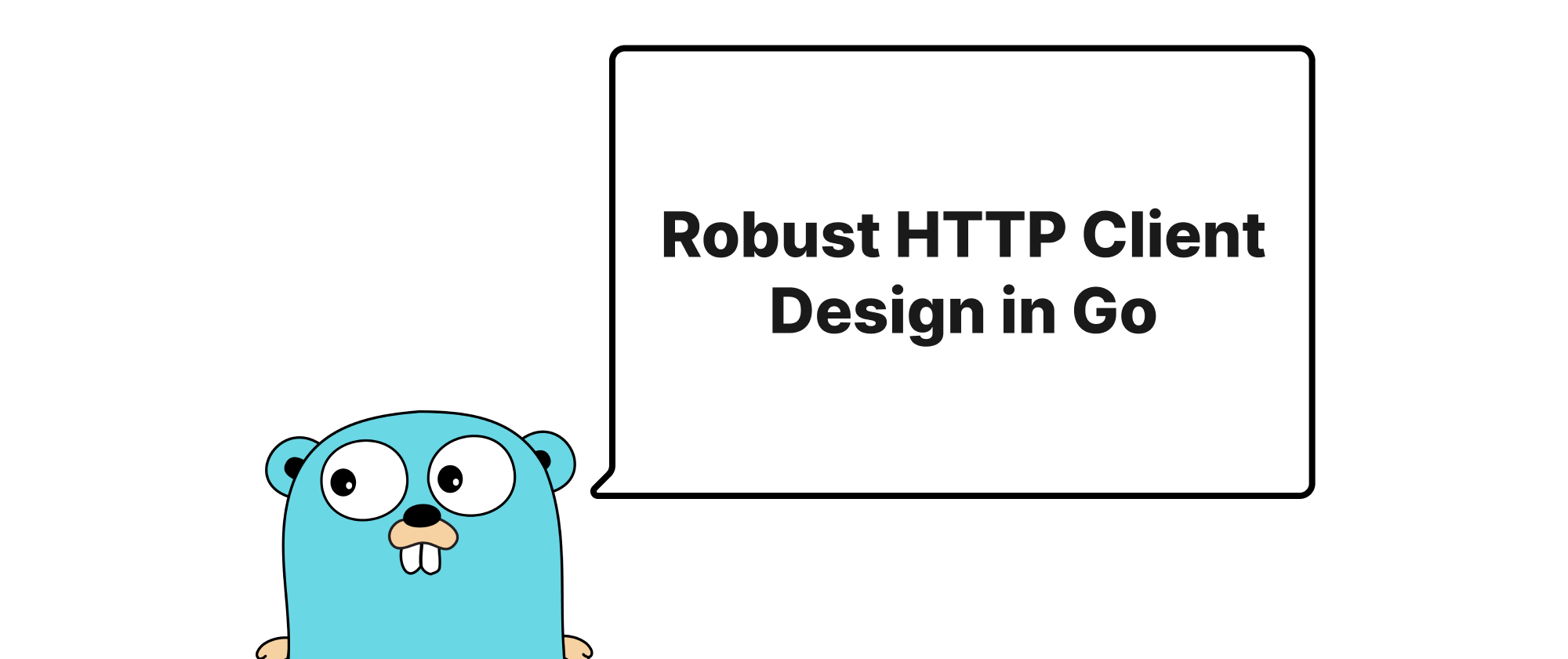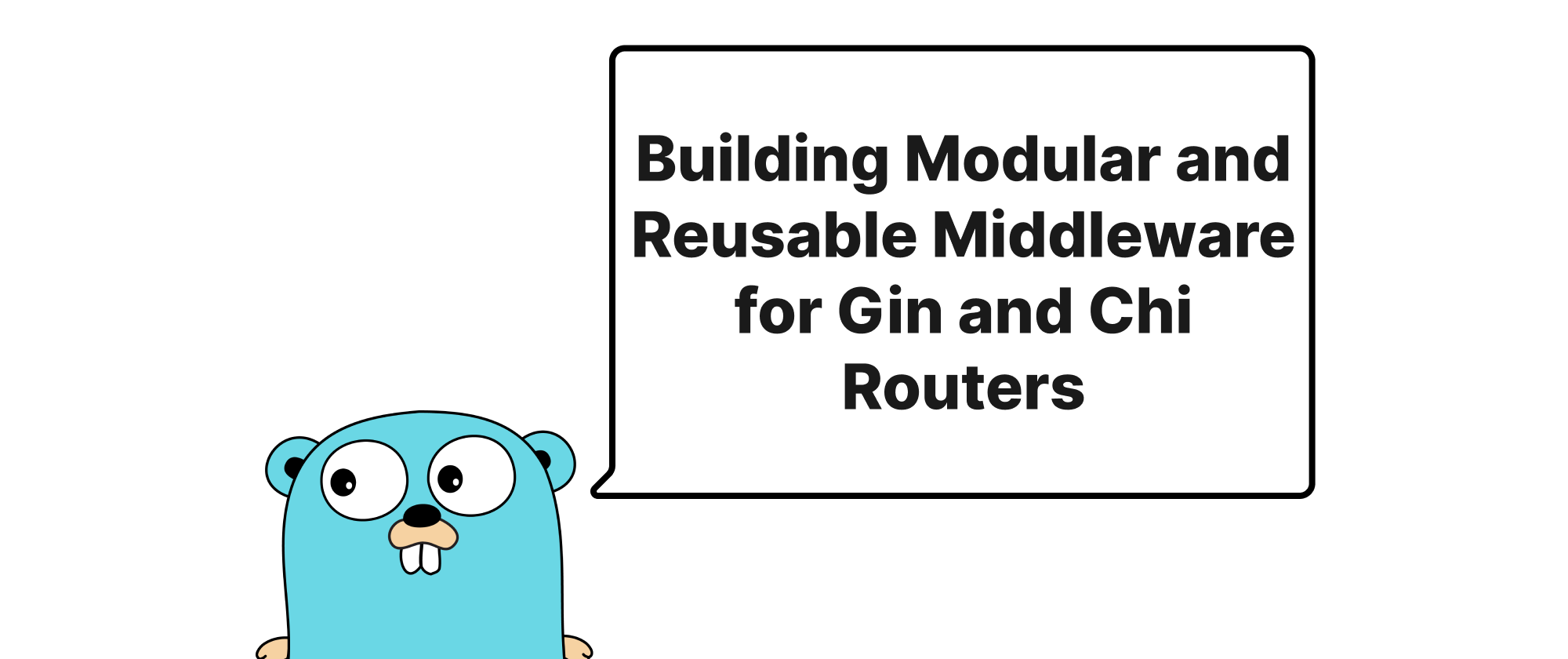Ensuring Data Integrity in Go Web Handlers
Grace Collins
Solutions Engineer · Leapcell

Introduction
Web applications are inherently concurrent. Every time a user interacts with a web service, a new request is typically spawned, often handled by a separate goroutine. This concurrency is a powerful feature, allowing Go applications to serve many users simultaneously and efficiently. However, this power comes with a significant challenge: managing shared data. When multiple goroutines attempt to read from or write to the same piece of data concurrently, the results can be unpredictable, leading to data corruption, race conditions, and ultimately, a broken application. Ensuring the integrity and consistency of this shared data in concurrent web handlers is paramount for building robust and reliable services. This article will delve into the mechanisms Go provides to achieve thread safety for shared data in such environments.
Core Concepts for Thread Safety
Before we dive into the solutions, let's establish a common understanding of the core concepts related to thread safety and concurrency in Go:
- Concurrency vs. Parallelism: Concurrency is about dealing with many things at once, while parallelism is about doing many things at once. Go excels at concurrency using goroutines and channels, which can then be parallelized by the Go runtime across multiple CPU cores.
- Goroutines: Lightweight, independently executing functions that run concurrently. They are multiplexed onto a smaller number of OS threads.
- Race Condition: A situation where multiple goroutines access shared data concurrently, and at least one of them modifies the data. The final outcome depends on the non-deterministic order in which these accesses occur.
- Shared Data: Any data accessible by multiple goroutines. This could be global variables, fields within a shared struct, or even data passed between goroutines via channels but then modified by both.
- Thread Safety: A program component is thread-safe if it behaves correctly even when called by multiple threads (or goroutines) concurrently. To achieve this, access to shared data must be synchronized.
Strategies for Thread-Safe Shared Data
Go offers several distinct approaches to handle shared data safely, each with its own trade-offs and best use cases.
1. Mutexes: Locking Shared Resources
A Mutex (Mutual Exclusion) is a synchronization primitive that ensures only one goroutine can access a critical section of code at any given time. In Go, the sync.Mutex type provides Lock() and Unlock() methods.
Principle: A goroutine acquires the lock before accessing shared data and releases it immediately after. If another goroutine tries to acquire a locked mutex, it will block until the mutex is released.
Example Scenario: Imagine a simple hit counter for an API endpoint.
package main import ( "fmt" "net/http" "sync" ) // GlobalHitCounter stores the total number of requests. // It's a shared resource that needs protection. var GlobalHitCounter struct { mu sync.Mutex count int } func init() { // Initialize the counter GlobalHitCounter.mu = sync.Mutex{} GlobalHitCounter.count = 0 } func hitCounterHandler(w http.ResponseWriter, r *http.Request) { // Acquire the lock before modifying the shared counter GlobalHitCounter.mu.Lock() GlobalHitCounter.count++ // Release the lock immediately after modification GlobalHitCounter.mu.Unlock() fmt.Fprintf(w, "Total hits: %d", GlobalHitCounter.count) } func main() { http.HandleFunc("/hits", hitCounterHandler) fmt.Println("Server starting on :8080") http.ListenAndServe(":8080", nil) }
In this example, GlobalHitCounter.mu.Lock() and GlobalHitCounter.mu.Unlock() define the critical section where GlobalHitCounter.count is modified. Without the mutex, concurrent requests could lead to an incorrect hit count due to race conditions.
2. RWMutex: Read-Write Locks
For shared data that is read much more frequently than it is written, sync.RWMutex provides a more efficient alternative to sync.Mutex. It allows multiple readers to access the data concurrently, but only one writer at a time, and no readers are allowed when a writer is present.
Principle:
RLock(): Acquires a read lock. Multiple goroutines can hold read locks simultaneously.RUnlock(): Releases a read lock.Lock(): Acquires a write lock. This blocks until all active read locks are released and any other write locks are released.Unlock(): Releases a write lock.
Example Scenario: A configuration cache that is loaded once or rarely updated, but frequently read by various parts of the application.
package main import ( "fmt" "net/http" "sync" "time" ) type Config struct { mu sync.RWMutex settings map[string]string } var appConfig = Config{ settings: make(map[string]string), } func init() { // Simulate initial config loading appConfig.mu.Lock() appConfig.settings["theme"] = "dark" appConfig.settings["language"] = "en_US" appConfig.mu.Unlock() } func getConfigHandler(w http.ResponseWriter, r *http.Request) { key := r.URL.Query().Get("key") if key == "" { http.Error(w, "Missing config key", http.StatusBadRequest) return } appConfig.mu.RLock() // Acquire read lock value, ok := appConfig.settings[key] appConfig.mu.RUnlock() // Release read lock if !ok { http.Error(w, fmt.Sprintf("Config key '%s' not found", key), http.StatusNotFound) return } fmt.Fprintf(w, "%s: %s", key, value) } func updateConfigHandler(w http.ResponseWriter, r *http.Request) { if r.Method != http.MethodPost { http.Error(w, "Method not allowed", http.StatusMethodNotAllowed) return } key := r.FormValue("key") value := r.FormValue("value") if key == "" || value == "" { http.Error(w, "Missing key or value", http.StatusBadRequest) return } appConfig.mu.Lock() // Acquire write lock appConfig.settings[key] = value appConfig.mu.Unlock() // Release write lock fmt.Fprintf(w, "Config updated: %s = %s", key, value) } func main() { http.HandleFunc("/config", getConfigHandler) http.HandleFunc("/update-config", updateConfigHandler) fmt.Println("Server starting on :8081") http.ListenAndServe(":8081", nil) }
Here, getConfigHandler uses RLock() because it only reads the configuration, allowing multiple concurrent reads. updateConfigHandler uses Lock() for exclusive access during modification.
3. Channels: Communicating Sequential Processes (CSP)
Go's fundamental approach to concurrency advocates for "Don't communicate by sharing memory; share memory by communicating." Channels are the primary mechanism for this. Instead of protecting shared data with locks, you can encapsulate the data within a single goroutine and communicate with it solely through channels.
Principle: A dedicated "owner" goroutine manages the shared data. Other goroutines send requests (e.g., to read or write) to the owner via an input channel and receive responses via an output channel.
Example Scenario: A more complex state management, like a shared queue or a logging service that collects messages from various sources.
package main import ( "fmt" "log" "net/http" "time" ) // Message represents a general message for the state manager type Message struct { ID string Content string Timestamp time.Time } // Request to the state manager type StateOp struct { Type string // "add", "get", "count" Message *Message ResultCh chan interface{} // Channel to send the operation result back } // stateManager goroutine will own and manage the messages slice func stateManager(ops chan StateOp) { messages := make([]Message, 0) for op := range ops { switch op.Type { case "add": messages = append(messages, *op.Message) op.ResultCh <- true // Confirm addition case "get": // In a real app, you'd filter/return specific messages op.ResultCh <- messages // Return all messages for simplicity case "count": op.ResultCh <- len(messages) default: log.Printf("Unknown operation type: %s", op.Type) op.ResultCh <- fmt.Errorf("unknown operation") } } } func addMessageHandler(ops chan StateOp) http.HandlerFunc { return func(w http.ResponseWriter, r *http.Request) { if r.Method != http.MethodPost { http.Error(w, "Method not allowed", http.StatusMethodNotAllowed) return } content := r.FormValue("content") if content == "" { http.Error(w, "Content cannot be empty", http.StatusBadRequest) return } msg := &Message{ ID: fmt.Sprintf("msg-%d", time.Now().UnixNano()), Content: content, Timestamp: time.Now(), } resultCh := make(chan interface{}) ops <- StateOp{Type: "add", Message: msg, ResultCh: resultCh} <-resultCh // Wait for the stateManager to process fmt.Fprintf(w, "Message added: %s", msg.ID) } } func getMessagesHandler(ops chan StateOp) http.HandlerFunc { return func(w http.ResponseWriter, r *http.Request) { resultCh := make(chan interface{}) ops <- StateOp{Type: "get", ResultCh: resultCh} result := <-resultCh if msgs, ok := result.([]Message); ok { fmt.Fprintf(w, "Messages:\n") for _, m := range msgs { fmt.Fprintf(w, " ID: %s, Content: %s, Time: %s\n", m.ID, m.Content, m.Timestamp.Format(time.RFC3339)) } } else { http.Error(w, "Failed to retrieve messages", http.StatusInternalServerError) } } } func main() { ops := make(chan StateOp) go stateManager(ops) // Start the goroutine that owns the data http.HandleFunc("/add-message", addMessageHandler(ops)) http.HandleFunc("/get-messages", getMessagesHandler(ops)) fmt.Println("Server starting on :8082") http.ListenAndServe(":8082", nil) }
In this channel-based approach, the messages slice is exclusively accessed and modified only by the stateManager goroutine. All other goroutines wishing to interact with this data send operations via the ops channel and receive results back on their ResultCh. This completely eliminates the need for explicit locks, as concurrency is managed by the Go runtime's channel mechanics.
Choosing the Right Strategy
- Mutexe (
sync.Mutex): Best for simple, fine-grained protection of individual variables or small data structures, especially when write operations are common. It's straightforward to implement. - RWMutex (
sync.RWMutex): Ideal for data where reads are significantly more frequent than writes, as it allows higher concurrency for read operations. - Channels (
chan): The Go-idiomatic way to manage complex shared state. Promotes cleaner architecture by decoupling data access from data management. Excellent for encapsulating state and modeling producer-consumer patterns or work queues. Can sometimes be more verbose for simple read/write operations but offers superior manageability for complex interactions.
Conclusion
Ensuring thread safety for shared data in concurrent Go web handlers is not merely a good practice, but a fundamental requirement for reliable applications. By diligently applying sync.Mutex for exclusive access, sync.RWMutex for optimized read-heavy scenarios, or leveraging the power of channels for owner-goroutine models, developers can effectively prevent race conditions and maintain data integrity. Choosing the appropriate synchronization mechanism based on access patterns and complexity will lead to scalable, robust, and predictable web services.


